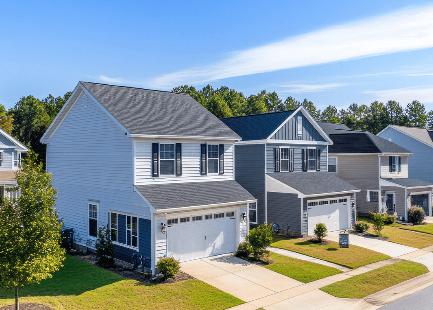Have you ever found the perfect property to flip but couldn’t move fast enough to secure it? In the world of house flipping, speed is everything. Traditional financing often slows down the process, making it difficult for investors to seize profitable opportunities before someone else does. That’s where bridge loans come in.
Bridge loans provide the fast, flexible funding that house flippers need to buy, renovate, and sell properties quickly. Unlike traditional mortgages, which can take weeks or even months to secure, bridge loans offer rapid approval and funding, ensuring that investors can act fast when an opportunity arises.
In this article, we’ll break down how bridge loans work, why they’re an essential tool for house flippers, and how they can maximize returns on real estate investments.
What Are Bridge Loans and How Do They Work?
Bridge loans are short-term financing solutions designed to “bridge the gap” between purchasing a property and securing long-term financing or selling the asset. They are particularly useful for house flippers who need quick access to capital.
Key characteristics of bridge loans:
- Short-term duration:Typically lasting 6–24 months
- Quick approval process:Faster than traditional bank loans
- Asset-based lending:Loan amounts are based on the property’s value rather than the borrower’s credit score
- Flexible repayment options:Can be repaid through the sale of the property or by refinancing into a long-term loan
Bridge loans can be secured for various property types, including multifamily real estate bridge loans, making them a powerful tool for investors looking to scale their portfolios.
Why House Flippers Rely on Bridge Loans
Bridge loans have become a cornerstone of successful house flipping for several reasons:
1. Speed and Accessibility
Traditional loans often require extensive paperwork, strict credit requirements, and long approval timelines. Multifamily property bridge loans, on the other hand, are designed for efficiency, with funds available in days rather than weeks.
2. Financing for Distressed Properties
Many lenders refuse to finance homes that require significant repairs. Private lending bridge loan multifamily financing allows investors to acquire and rehabilitate distressed properties, turning them into high-value assets.
3. Leverage for Multiple Deals
Instead of tying up all their capital in a single property, investors can use bridge loans to finance multiple projects simultaneously, increasing their potential returns.
How to Use Bridge Loans Effectively in House Flipping
To maximize the benefits of bridge loans, investors should:
1. Choose the Right Property
- Look for undervalued properties in desirable neighborhoods.
- Consider properties that require only cosmetic upgrades rather than full structural renovations.
- Ensure a strong after-repair value (ARV) to guarantee profitability.
2. Work with Reliable Contractors
- A smooth renovation process depends on experienced contractors who can work within budget and timeline constraints.
- Delays in construction can lead to higher interest costs on the loan, cutting into profit margins.
3. Have a Clear Exit Strategy
- Plan to sell the property quickly to repay the bridge loan.
- If selling isn’t immediately feasible, refinancing into a longer-term loan is a viable backup option.
The Advantages of Multifamily Property Bridge Financing for Flippers
While many house flippers focus on single-family homes, multifamily property bridge financing presents an even greater opportunity. Investing in multifamily real estate bridge loans provides:
- Higher rental income potential– If selling the property takes longer than expected, leasing units can generate income to cover loan payments.
- Economies of scale– Renovating multiple units at once often reduces per-unit costs.
- Greater appreciation potential– Well-renovated multifamily properties can see significant increases in value over a short period.
Common Mistakes to Avoid When Using Bridge Loans for House Flipping

Image File Name: house-flipping
Image Alt Text: A couple about to sign a document
Image Caption: Bridge loans provide the fast, flexible funding that house flippers need to buy, renovate, and sell properties quickly
Even with the best financing in place, house flippers can make costly mistakes. Here are some to watch out for:
1. Underestimating Renovation Costs
- Always budget for unexpected repairs and delays.
- Get multiple contractor quotes to ensure cost accuracy.
2. Misjudging Market Demand
- Ensure there’s a strong buyer demand for flipped properties in the target market.
- Study comparable sales (comps) to set realistic pricing expectations.
3. Ignoring Loan Terms and Fees
- Bridge loans often have higher interest rates than traditional loans.
- Understand repayment terms, prepayment penalties, and closing costs before committing.
Is a Bridge Loan Right for Your Next Flip?
House flipping is all about speed, efficiency, and maximizing returns. If you’re looking for a financing solution that allows you to move quickly on the best deals, bridge loans are a game-changer. They provide the capital needed to acquire properties fast, fund renovations, and close deals before market conditions shift.
When you work with a private lender specializing in multifamily bridge loan financing, you get the flexibility and expertise necessary to make the most of every investment opportunity. With the right financing partner, you can focus on what matters most—finding great properties, making strategic improvements, and selling for a profit.
Contact us at (833) 319-3517 to learn how our bridge loans can help you achieve your real estate investment goals.




